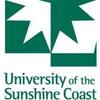Atlantis and InVitro are ecosystem models developed by the CSIRO. Atlantis has been rated as one of the best whole-of-ecosystem models available for the marine environment. It has been used to inform the Australian Fisheries Management Authority, and applied to several marine ecosystems in Australia, United States, Norway, Mexico, South Africa and the Caribbean (Figure 1) (CSIRO, 2012a). InVitro allows consideration of multiple uses such as fishing, transport, tourism and oil and gas. For example, it has been used to evaluate regional marine plans in Australia under the national Oceans Policy (Figure 2) (CSIRO, 2012b). These models have been instrumental in enabling a better understanding of how marine ecosystems function and associated management.
Organisational approach
Key to the CSIRO approach is a focus on improved communication between science and policy. The CSIRO has used a range of alternative communication tools and strategies based on stakeholder preferences for the receipt of scientific information.
In the coastal and marine context, Atlantis and InVitro have been developed to support ecosystem-based management that takes into account resource use and conservation considerations. The models simulate the marine environment and include the behaviour of relevant industries, resource monitoring and assessment processes, and management options and their implementation.
The CSIRO has adopted a participatory approach to ecosystem modelling to support multi-stakeholder decision-making and encourage stakeholders to consider the system as an interconnected whole while exploring alternative management strategies. ‘User friendly’ models (i.e. simplified versions of the scientific models) are employed to help stakeholders learn how complex systems work. By being able to manipulate these models themselves, stakeholders are able to create scenarios, explore different strategies, and gain insights into each other’s interests and viewpoints. By engaging stakeholders in modelling exercises, researchers have also been able to access the diversity and richness of stakeholder knowledge about ecosystems–adding to the available pool of information. Such participatory approaches are also effective in creating a sense of ownership of decision-making and problem-solving processes among stakeholders, and, importantly, provide opportunities for minimising conflicts and building consensus.
Key lessons for adaptive learning
Lessons from the CSIRO ecosystem modelling experience include:
- Consideration of multiple dimensions of ecosystems (e.g. biophysical, economic and social)
- Engaging stakeholders in conceptualising problems and solutions to ensure ownership of associated decision-making processes
- Using interactive communication tools and strategies to improve the understanding of ecosystems and to explore alternative management strategies and their implications
- Using stakeholder knowledge to complement scientific information
- Creating opportunities for interaction and building consensus
Summary
The CSIRO has developed ecosystem models to support the management of marine systems in an integrated way. These models consider biophysical, economic and social dimensions of the ecosystem, and have assisted stakeholders to understand and appreciate ecosystem-based management. This case study illustrates how science can be used in a participatory way to support ecosystem management by creating a sense of ownership of decision-making and problem-solving processes among stakeholders, facilitating collaborative learning, minimising conflicts and building consensus. The CSIRO approach has been regarded as a success in engaging stakeholders and decision-makers, and ultimately improving communication between science and policy.

Ningaloo, Western Australia, one of the marine systems where the model InVitro has been used (Photo: Carl Koenig).










